Comments / Questions (12)
![]() Izabela wrote:
Izabela wrote:
Tylko, że mi chodziło o prawy przód, nie tył :) i pomyliłam nr schematu. Proszę o wyjaśnienie jak wygląda zamykanie oczek na schemacie A.5. A najlepiej cały rząd, w którym zaczyna się schemat A.5.
21.10.2025 - 14:18DROPS Design answered:
Witaj Izo, prawy przód, gdy przerabiasz schemat A.5 zamykasz tylko oczka na dekolt: 1-szy rząd: (1 o.p., 1 o.l.) 5 razy, następnie zamykasz 1 o. (zdjąć 1 oczko jak do przerobienia na prawo, przerobić 1 oczko prawe, przełożyć oczko zdjęte nad przerobionym oczkiem), dalej powtarzasz (1 o.p., 1 o.l.), a 6 ostatnich oczek przerabiasz ściegiem francuskim. 2-gi rząd: 6 o. ściegiem francuskim, dalszą część rzędu przerabiasz na lewo. Dalej przerabiasz tak samo, czyli zamykasz 1 o. w odl. 10 o. od brzegu na prawej stronie robótki łącznie 12 razy (powtarzasz schemat A.5 6 razy na wysokość). Zostaje 40-12=28 o. na ramię. Pozdrawiamy!
22.10.2025 - 09:25
![]() Iza wrote:
Iza wrote:
W rozmiarze L nie zamykam oczek na podkrój rękawa? W jaki sposob zamykać oczka w schemacie A3? Na prawej stronie robótki?
20.10.2025 - 19:40DROPS Design answered:
Witaj Izo, TYŁ: dalej przerabiasz w tę i z powrotem tak samo, aż długość robótki wynosi 32 cm. Teraz przerabiasz ściegiem francuskim 10 oczek z każdej strony (przerabiać pozostałe oczka jak wcześniej). Gdy zostaną przerobione 2 ściągacze francuskie ponad tymi 10 oczkami na bokach tyłu, zamknij 4 oczka na podkroje rękawów na początku 2 kolejnych rzędów > czyli zamykasz oczka na podkroje rękawów na początku rzędu na prawej stronie robótki i na początku rzędu na lewej stronie robótki. Oczka te są przerabiane ściegiem francuskim, więc nie zamykasz oczek na schemacie A.3. Pozdrawiam!
21.10.2025 - 08:59
![]() Izabela wrote:
Izabela wrote:
Wymieniłam włóczke na merino, ona jest taka rozciągliwa. Przody i tył najlepiej zszywać przed blokowaniem czy po? Jaki jest najbardziej elastyczny szew?
19.10.2025 - 12:05DROPS Design answered:
Witaj Izo, uprałabym części oddzielnie i zszywała później. Zobacz TUTAJ. Inne sposoby zszywania znajdziesz w zakładce INSTRUKCJE VIDEO, we wzorze. Pozdrawiam!
19.10.2025 - 19:20
![]() Izabela wrote:
Izabela wrote:
Tył, rozmiar XL - w rzędzie, gdzie zamykam oczka, aby przerobić osobno ramiona - przerabiam jak do tej pory 29 oczek, 23 zamykam, kolejne 29 też tak jak do tej pory przerabiam i w kolejnym rzędzie zamykam jedno oczko od strony dekoltu? A potem w kolejnych rzędach już nic nie zwężam? I jak zaczynam drugie ramię nowa nitką, to też w pierwszym rzędzie na końcu zamykam jedno oczko?
18.10.2025 - 22:42DROPS Design answered:
Witaj Izo, dokładnie tak. Przerabiasz dalej i zamykasz oczka ramion gdy długość tyłu wynosi 66 cm. Pozdrawiamy!
19.10.2025 - 08:32
![]() Toos De Zeeuw wrote:
Toos De Zeeuw wrote:
Ik heb een nieuw proeflapje gebreid op nld 8 (!). Dat klopt precies.
09.05.2025 - 15:02
![]() Toos De Zeeuw wrote:
Toos De Zeeuw wrote:
Ik heb het idee dat de stekenverhouding van dit patroon niet juist is. Ik moet 22 steken rekenen voor 10 cm en 27 nld, terwijl ik beslist niet strak brei. Zijn er soortgelijke ervaringen van anderen bekend ? Overigens ben ik meestal erg blij met jullie patronen en garens!
09.05.2025 - 10:42
![]() Rita wrote:
Rita wrote:
Hallo, Drops Design, wird das Rückenteil in glatt rechts gestrickt oder auch im Muster? Vielen Dank für die Bereitstellung der Anleitung!
06.03.2025 - 18:14DROPS Design answered:
Liebe Rita, Rückenteil wird im Muser A.1 gestrickt. Viel Spaß beim Stricken!
07.03.2025 - 08:42
![]() Mar wrote:
Mar wrote:
Hallo, ich würde gerne wissen, ob es möglicherweise einen Fehler in der Anleitung gibt und ob Links und Rechts vertauscht wurden. Vielen Dank
16.01.2025 - 11:21DROPS Design answered:
Liebe Frau Mar, es ist alles so richtig, z.B. beim rechten Vorderteil (wenn man die Weste trägt), wird man A.3/A.5 nach den 3 ersten Maschen bei den Hinreihen stricken = so kommen die Abnahmen für V-Halsausschnitt mit A.5 am Anfang einer Hin-Reihe. Oder meinen Sie irgendwo anders?
16.01.2025 - 16:49
![]() Michaela wrote:
Michaela wrote:
Hallo, ich wusste gern wie die Maschenprobe gestrickt wird. Dort steht zwar Strukturmuster, aber nicht welches der 5 die in dieser Anleitung vorkommen. Lg
27.10.2022 - 11:41DROPS Design answered:
Liebe Michaela, Maschenprobe stricken Sie mit den Nadeln Nr 5,5 - die Länge der Rundnadel hängt an der Größe an (60 cm in die 4 ersten Größe und 80 in die 2 lezten Größen). Viel Spaß beim stricken!
27.10.2022 - 13:39
![]() Aino wrote:
Aino wrote:
1. Please review the subheadings, there is no size XXXL. 2. I think the back piece hem ribbing directions are not sufficient for the wrong side. Should'nt the wrong side be e.g. '7 garter sts, repeat *knit 1 /purl 1* until 8 sts remain, knit 1, 7 garter sts
24.11.2021 - 22:43DROPS Design answered:
Dear Aino, thanks for the tip, all XXXL have been now edited into XXL - on back piece you are working rib K1, P1 with 6 sts garter on each side, ie work from RS: 6 sts in garter st, *K1, P1*, repeat from *-* until 7 sts remain, work K1 and end with 6 sts in garter stitch. From WS work: 6 sts in garter st, rib *P1, K1*, repeat from *-* until 7 sts remain, work P1 and 6 sts in garter stitch. Happy knitting!
25.11.2021 - 09:27
Ash Mint Vest#ashmintvest |
||||||||||||||||
 |
 |
|||||||||||||||
Knitted vest in DROPS Sky and DROPS Kid-Silk. Piece is knitted with V-neck, vents in the sides, textured pattern and displacements. Size XS – XXL.
DROPS 227-32 |
||||||||||||||||
|
---------------------------------------------------------- EXPLANATION FOR THE PATTERN: ---------------------------------------------------------- GARTER STITCH (back and forth): Knit all rows. 1 ridge vertically = knit 2 rows. PATTERN: See diagrams A.1 to A.5. Diagrams show all rows in pattern seen from the right side. ---------------------------------------------------------- START THE PIECE HERE: ---------------------------------------------------------- VEST – SHORT OVERVIEW OF THE PIECE: Work front piece and back piece back and forth on circular needle. Then assemble the vest by sewing together on the shoulders and down the side seams. Work a band along the front pieces until mid back of neck - work bands back and forth on circular needle in 2 parts and sew together mid back. BACK PIECE: Cast on 73-77-85-89-97-105 stitches on circular needle size 4.5 mm with 1 strand of each colour (= 2 strands). Purl 1 row from wrong side. Then work rib as follows: 6 stitches in GARTER STITCH - read explanation above - * knit 1/purl 1 *, repeat from *-* until 7 stitches remain, knit 1 and 6 stitches in garter stitch. Continue back and forth like this for 4 cm. Switch to circular needle size 5.5 mm. Now work pattern as follows: 6 stitches in garter stitch, A.1 (= 2 stitches) until 7 stitches remain, work first stitch in A.1 so that pattern begins and ends the same, work 6 stitches in garter stitch. REMEMBER THE KNITTING TENSION! Continue back and forth like this until piece measures 29-30-31-32-33-34 cm. Now work in garter stitch over the outermost 8-8-10-10-10-10 stitches in each side. When 2 ridges have been worked over these stitches, cast off 2-2-4-4-4-4 stitches for armholes at the beginning of the next 2 rows = 69-73-77-81-89-97 stitches. In sizes XS, S, M and L skip next section and continue to work from ALL SIZES – read explanation below. In sizes XL and XXL work as explained below. SIZE XL AND XXL: Now decrease 1 stitch inside 6 stitches in garter stitch in each side as follows: Work next row from right side as follows: Work 6 stitches in garter stitch, slip 1 stitch knitwise, knit 1, pass slipped stitch over stitch worked(= 1 stitch decreased), work until 8 stitches remain, knit 2 together(= 1 stitch decreased), work 6 stitches in garter stitch. Decrease like this on every row from right side 4-6 times in total = 81-85 stitches. ALL SIZES: Continue back and forth with A.1 and 6 stitches in garter stitch in each side. When piece measures 56-58-60-62-64-66 cm, cast off the middle 19-19-19-23-23-23 stitches for neck and finish each shoulder separately. Then cast off 1 stitch on next row from the neck = 24-26-28-28-28-30 stitches remain for shoulder. When piece measures 58-60-62-64-66-68 cm, cast off with knit over knit and garter stitch over garter stitch. Work the other shoulder the same way. RIGHT FRONT PIECE: Cast on 36-38-42-44-48-52 stitches on circular needle size 4.5 mm with 1 strand of each colour (= 2 strands). Purl 1 row from wrong side. Then work rib as follows: 1 edge stitch in garter stitch, * knit 1, purl 1 *, work from *-* until 7 stitches remain, knit 1, 6 stitches in garter stitch. Continue back and forth like this for 4 cm. Switch to circular needle size 5.5 mm. Now work pattern as follows: 1 edge stitch in garter stitch, A.1 until 7 stitches remain, work first stitch in A.1 so that pattern begins and ends the same, work 6 stitches in garter stitch. Continue back and forth like this. When piece measures 9-9-10-10-11-11 cm, work pattern as follows: 1 edge stitch in garter stitch, A.1 over the next 2 stitches, A.3 over the next 22 stitches, work pattern as before the rest of row. Continue back and forth like this until piece measures 29-30-31-32-33-34 cm. Now work in garter stitch over the outermost 8-8-10-10-10-10 stitches towards the side (i.e. at the end of row seen from right side). When 2 ridges have been worked over these stitches, cast off 2-2-4-4-4-4 stitches for armhole at the beginning of next row from wrong side = 34-36-38-40-44-48 stitches. OVERVIEW OF NEXT SECTION: Then work as explained under the next sections - choose section for your size. SIZE XS, S, M and L: Continue to decrease for V-neck and work pattern as follows: PATTERN AND DECREASE FOR V-NECK: Now continue to work with 6 stitches in garter stitch towards the side (i.e. at the end of row seen from right side) and pattern as before over the remaining stitches. When A.3 has been worked vertically 2 times in total, work A.5 over A.3 (continue the remaining stitches as before). Decrease in A.5 is decrease for V-neck. When A.5 have been worked vertically, continue decrease the same way until 10-10-10-12 stitches have been decreased in total. When all decreases for V-neck are done, 24-26-28-28 stitches remain for shoulder. Continue to work until piece measures 58-60-62-64 cm. Cast off with knit over knit and garter stitch over garter stitch. Work the other shoulder the same way. SIZE XL AND XXL: Continue to decrease stitches for armhole, at the same time work pattern and decrease for V-neck as explained below. DECREASE FOR ARMHOLE: Now decrease 1 stitch inside 6 stitches in garter stitch at the end of row as follows: Work until 8 stitches remain on needle, knit 2 together (= 1 stitch decreased), work 6 stitches in garter stitch. Decrease like this on every row from right side 4-6 times in total. PATTERN AND DECREASE FOR V-NECK: Now continue to work with 6 stitches in garter stitch towards the side and pattern as before over the remaining stitches. When A.3 has been worked vertically 2 times in total, work A.5 over A.3 (continue the remaining stitches as before). Decrease in A.5 is decrease for V-neck. When A.5 has been worked vertically, continue decrease the same way until 12-12 stitches have been decreased in total. When all decreases for V-neck are done, 28-30 stitches remain for shoulder. Work until piece measures 66-68 cm. Cast off side with knit over knit and garter stitch over garter stitch. Work the other shoulder the same way. LEFT FRONT PIECE: Cast on 36-38-42-44-48-52 stitches on circular needle size 4.5 mm with 1 strand of each colour (= 2 strands). Purl 1 row from wrong side. Then work rib as follows: 6 stitches in garter stitch, * knit 1, purl 1 *, work from *-* until 2 stitches remain, knit 1, 1 edge stitch in garter stitch. Continue back and forth like this for 4 cm. Switch to circular needle size 5.5 mm. Now work pattern as follows: 6 stitches in garter stitch, A.1 until 2 stitches remain, work first stitch in A.1 so that pattern begins and ends the same, work 1 edge stitch in garter stitch. Continue back and forth like this. When piece measures 9-9-10-10-11-11 cm, work pattern as follows: 6 stitches in garter stitch, A.1 over the next 5-7-11-13-17-21 stitches, A.2 over the next 22 stitches, work pattern as before the rest of row. Continue back and forth like this until piece measures 29-30-31-32-33-34 cm. Now work in garter stitch over the outermost 8-8-10-10-10-10 stitches towards the side (i.e. at the beginning of row seen from right side). When 2 ridges have been worked over these stitches, cast off 2-2-4-4-4-4 stitches for armhole at the beginning of next row from right side = 34-36-38-40-44-48 stitches. OVERVIEW OF NEXT SECTION: Then work as explained under the next sections - choose section for your size. SIZE XS, S, M and L: Continue to decrease for V-neck and work pattern follows: Now continue to work with 6 stitches in garter stitch towards the side (i.e. at the beginning of row seen from right side) and pattern as before over the remaining stitches. When A.2 has been worked vertically 2 times in total, work A.4 over A.2 (continue the remaining stitches as before). Decrease in A.4 is decrease for V-neck. When A.4 been worked vertically, continue decrease the same way until 10-10-10-12 stitches have been decreased in total. When all decreases for V-neck are done, 24-26-28-28 stitches remain for shoulder. Continue to work until piece measures 58-60-62-64 cm. Cast off with knit over knit and garter stitch over garter stitch. Work the other shoulder the same way. SIZE XL AND XXL: Continue to decrease stitches for armhole, at the same time work pattern and decrease for V-neck as explained below. DECREASE FOR ARMHOLE: Now decrease 1 stitch inside 6 stitches in garter stitch towards the side (i.e. the beginning of row as seen from right side) as follows: Work 6 stitches in garter stitch, slip 1 stitch knitwise, knit 1, pass slipped stitch over stitch worked (= 1 stitch decreased), work the rest of row as before. Decrease like this on every row from right side 4-6 times in total. PATTERN AND DECREASE FOR V-NECK: Now continue to work with 6 stitches in garter stitch towards the side and pattern as before over the remaining stitches. When A.2 has been worked vertically 2 times in total, work A.4 over A.2 (continue the remaining stitches as before). Decrease in A.4 is decrease for V-neck. When A.4 has been worked vertically, continue decrease the same way until 12-12 stitches have been decreased in total. When all decreases for V-neck are done, 28-30 stitches remain for shoulder. Work until piece measures 66-68 cm. Cast off with knit over knit and garter stitch over garter stitch. Work the other shoulder the same way. ASSEMBLY: Sew shoulder seams inside cast-off edges. Sew side seam in outermost loop of edge stitches from armhole and down until approx. 17 cm remain (= vent). Repeat in the other side. Insert 1 marker thread mid back of neck - use marker thread when picking up stitches for bands. RIGHT BAND: Begin at the bottom of right front piece and pick up from right side approx. 121 to 143 stitches inside 1 edge stitch in garter stitch up to marker thread mid back on circular needle size 4.5 mm with 1 strand of each quality (= 2 strands). Turn and purl 1 row from wrong side, but where decrease for neck begins, increase by making yarn over as follows * 1 yarn over, knit 1 *, work from *-* 4 times (= 4 stitches increased), work the rest of row. Now work rib as follows: 1 edge stitch in garter stitch, * knit 1, purl 1 *, work from *-* until 2 stitches remain, knit 1, 1 edge stitch in garter stitch. When rib measures 1 cm, decrease for 4-4-4-5-5-5 buttonholes evenly as follows: 1 buttonhole = work 2 together, make 1 yarn over. On next row knit yarn over to make holes. Bottom buttonhole should be approx. 5 cm from bottom edge, and top buttonhole where V-neck begins. Place the remaining 2-2-2-3-3-3 buttonholes evenly approx. 10-10-10½-7½-8-8 cm apart. Continue with rib until band measures 3 cm in total. Cast off stitches with knit over knit and purl over purl. LEFT BAND: Begin mid back of neck and pick up the same number of stitches as on right band inside 1 edge stitch in garter stitch down along left front piece on circular needle size 4.5 mm with 1 strand in each quality (= 2 strands). Turn and purl 1 row from wrong side, but where decrease for neck begins, increase by making yarn over as follows * 1 yarn over, knit 1 *, work from *-* 4 times (= 4 stitches increased), work the rest of row. Now work rib as follows: 1 edge stitch in garter stitch, * knit 1, purl 1 *, work from *-* until 2 stitches remain, knit 1, 1 edge stitch in garter stitch. When rib measures 3 cm, cast off with knit over knit and purl over purl. Sew bands together mid back inside 1 edge stitch in garter stitch. |
||||||||||||||||
Diagram explanations |
||||||||||||||||
|
||||||||||||||||
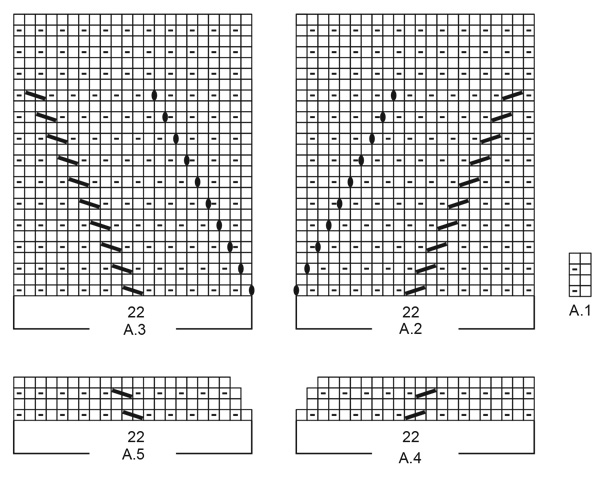 |
||||||||||||||||
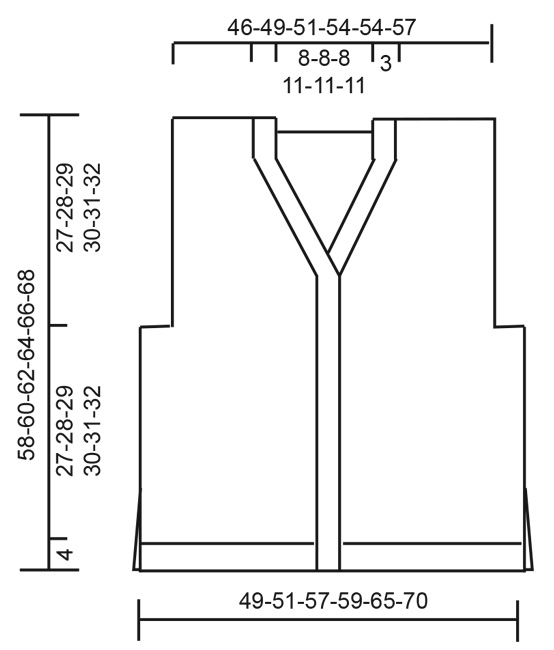 |
||||||||||||||||
Have you finished this pattern?Tag your pictures with #dropspattern #ashmintvest or submit them to the #dropsfan gallery. Do you need help with this pattern?You'll find 22 tutorial videos, a Comments/Questions area and more by visiting the pattern on garnstudio.com. © 1982-2025 DROPS Design A/S. We reserve all rights. This document, including all its sub-sections, has copyrights. Read more about what you can do with our patterns at the bottom of each pattern on our site. |
||||||||||||||||







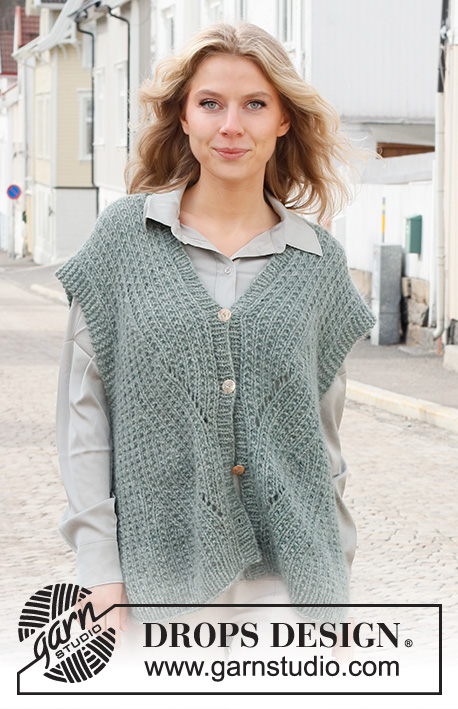
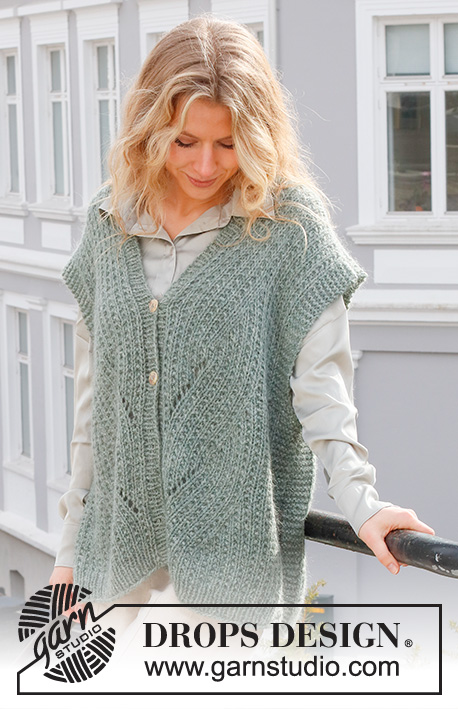
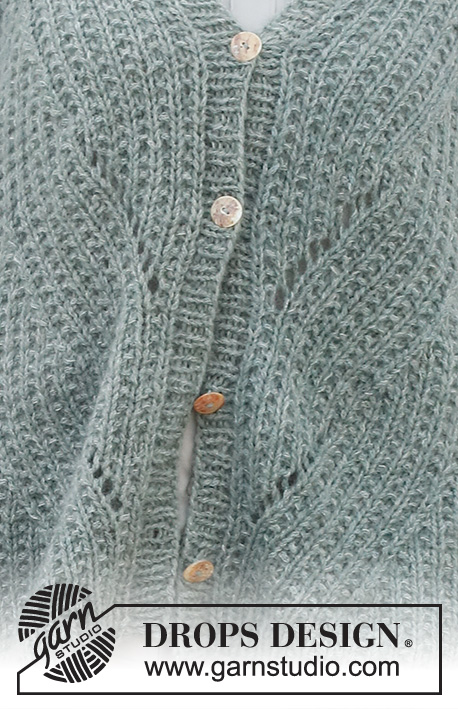

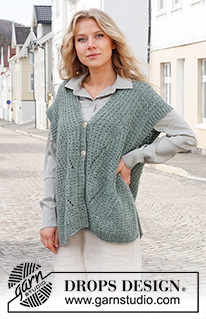
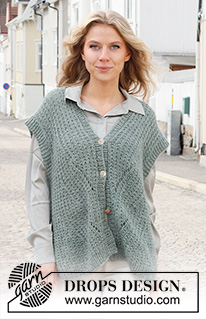
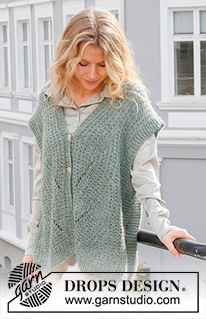
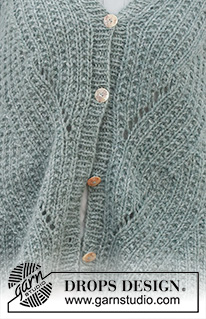

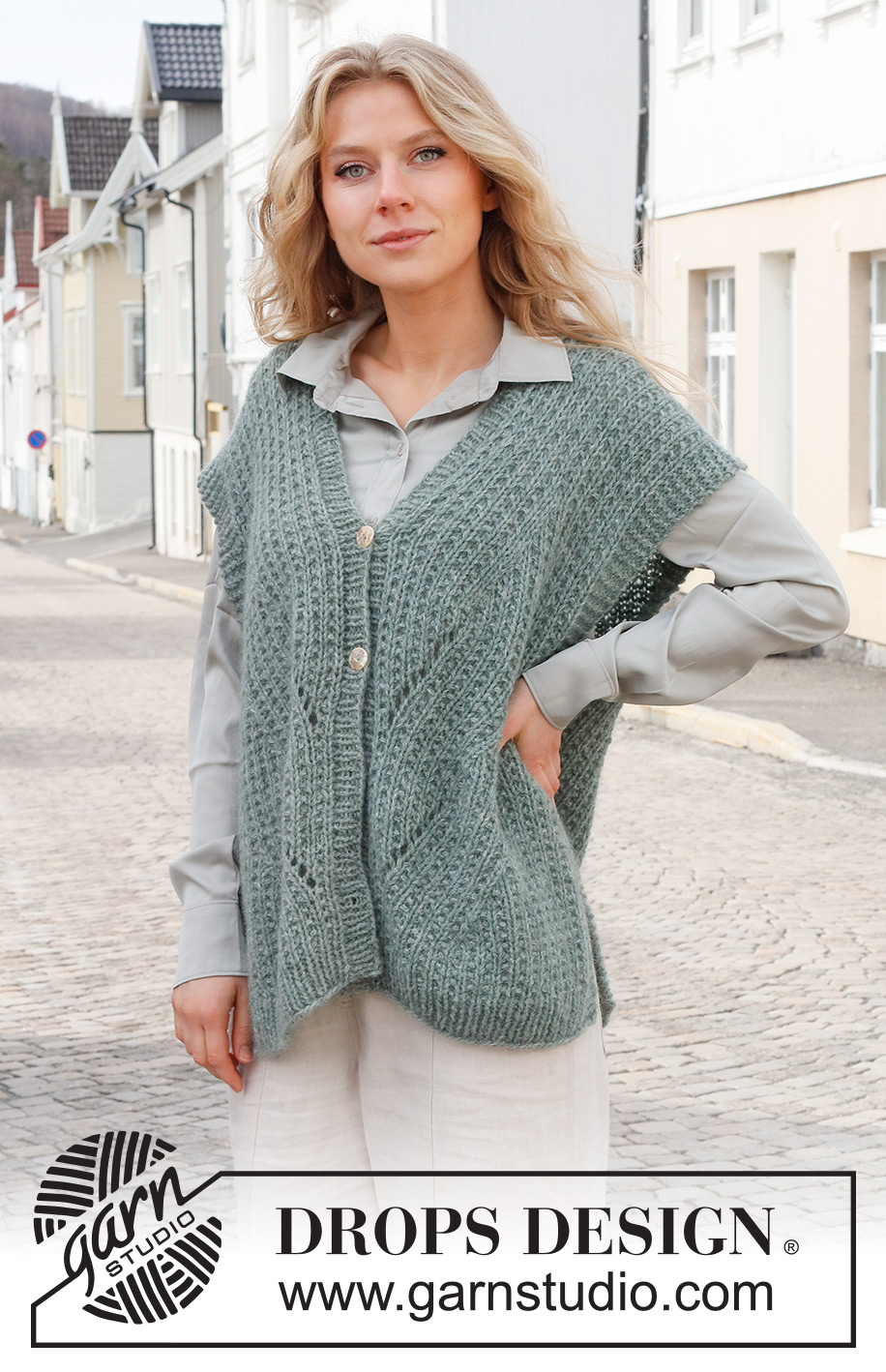
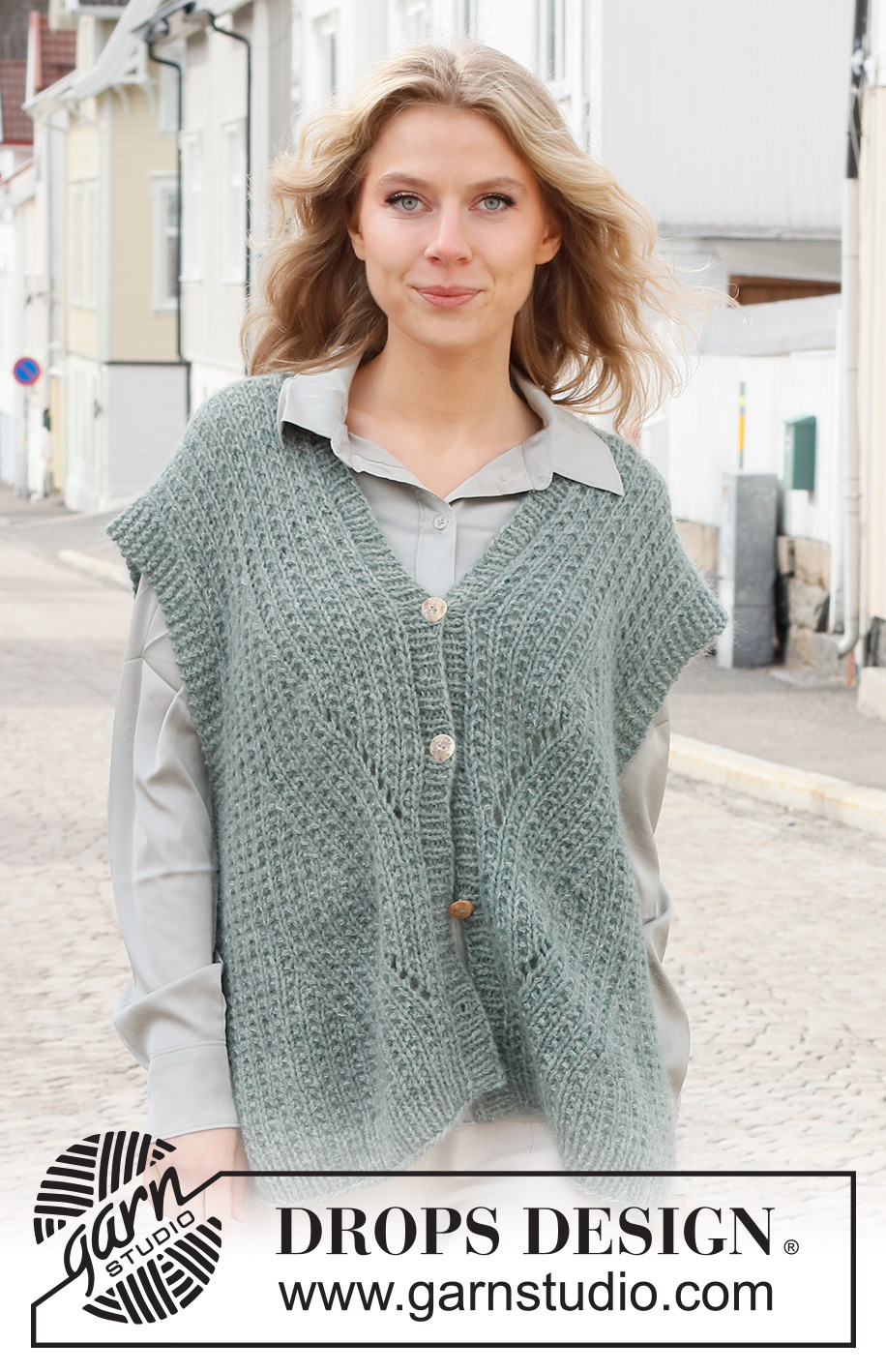
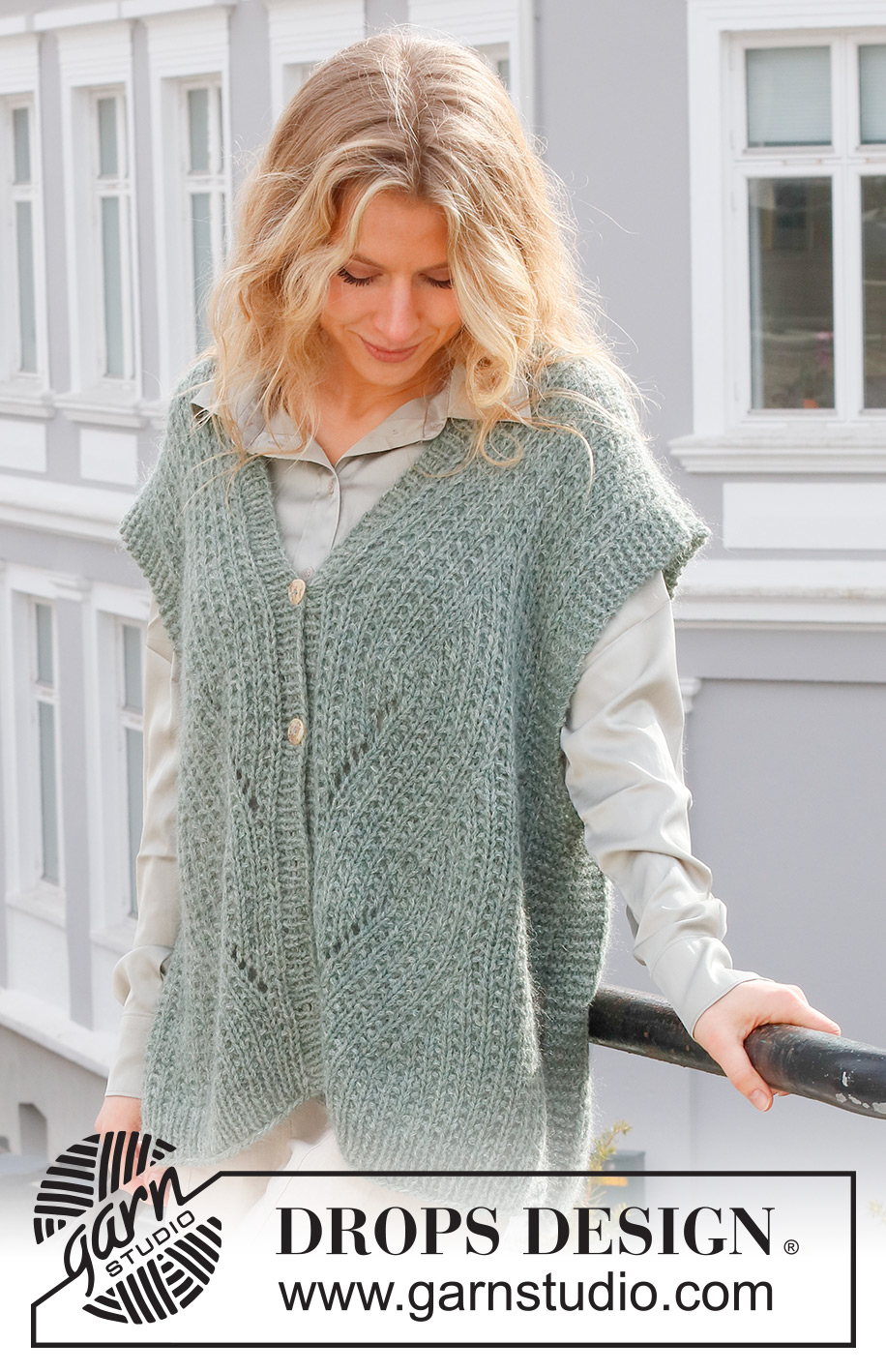
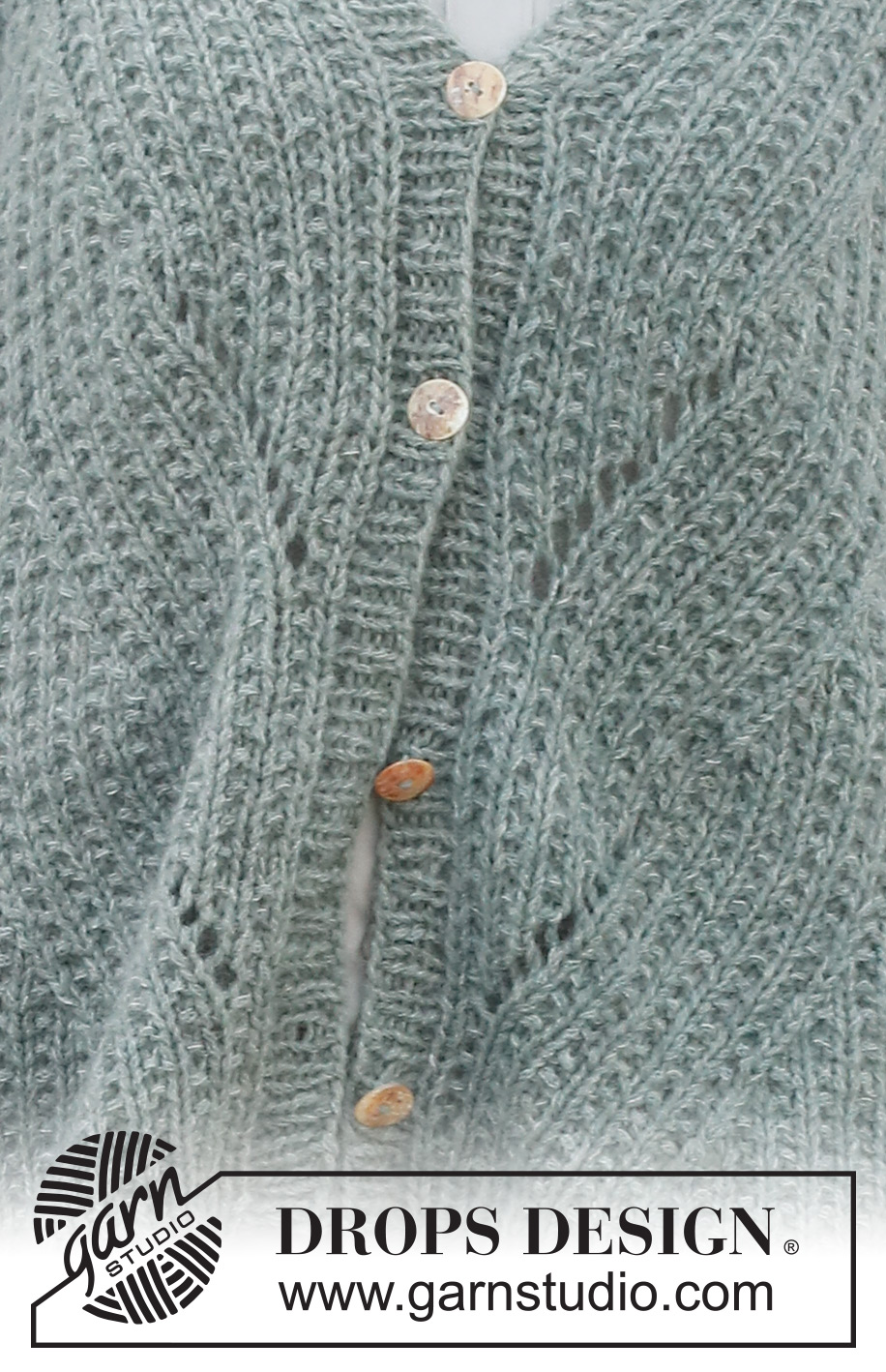



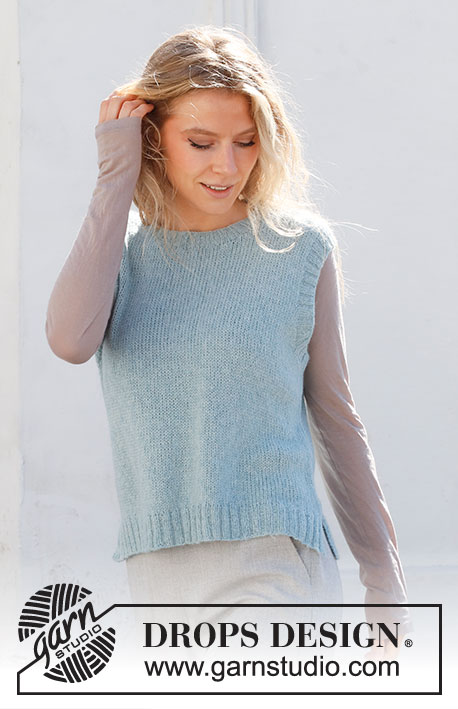































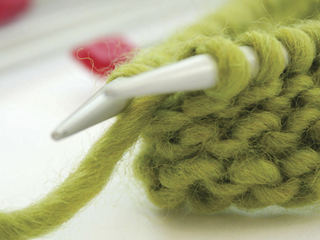









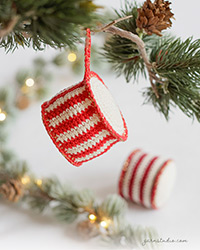
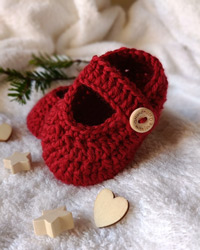
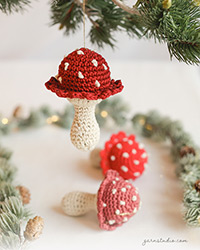
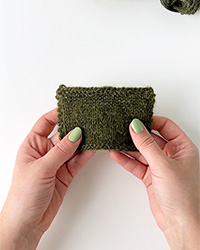
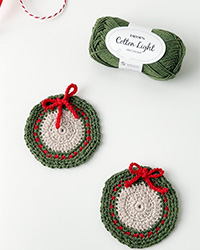
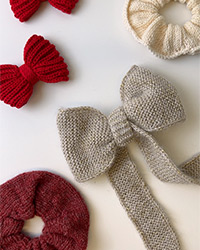
Post a comment to pattern DROPS 227-32
We would love to hear what you have to say about this pattern!
If you want to leave a question, please make sure you select the correct category in the form below, to speed up the answering process. Required fields are marked *.